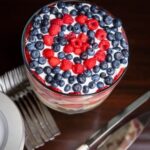Are you looking to take your cake decorating skills to the next level? In this article, we will delve into the art of cake decorating with cream, exploring various techniques and tips to help you create beautiful and delicious masterpieces. Whether you’re a novice or an experienced baker, learning how to decorate the cake with cream can open up a world of creative possibilities for your confectionary creations.
When it comes to cake decorating, using cream offers a versatile and delectable way to add visual appeal and flavor to your cakes. From simple swirls and rosettes to intricate designs and textures, there are countless ways to use cream as a medium for expressing your creativity. With the right knowledge and skills, you can transform a basic cake into a work of art that will impress friends, family, or clients.
In this introductory section, we’ll provide an overview of what’s to come in this comprehensive guide. We’ll cover everything from understanding different types of cream for cake decorating and essential tools and supplies needed to get started, to preparing the cake base and mastering various decorating techniques.
Get ready to be inspired by design ideas and learn how to troubleshoot common problems that may arise along the way. So grab your apron and let’s dive into the wonderful world of cake decorating with cream.
The Basics
Cream is a versatile and essential ingredient for cake decorating, and understanding the different types of cream available can help you achieve the perfect decor for your cake. When it comes to cake decorating with cream, there are several options to consider:
- Buttercream: This type of cream is made from butter and powdered sugar, often flavored with vanilla or other extracts. It is easy to work with and can be used for piping designs, spreading smoothly over the cake’s surface, or creating textured effects.
- Whipped Cream: Light and airy, whipped cream is a popular choice for decorating cakes due to its fluffy texture. It can be sweetened with sugar and flavored with extracts or liqueurs, making it a delicious option for filling layers or topping a cake.
- Cream Cheese Frosting: Combining cream cheese with butter, powdered sugar, and flavorings creates a rich and tangy frosting that is ideal for decorating cakes. Its creamy consistency makes it suitable for both piping intricate designs and spreading over the cake.
Having a good understanding of these different types of cream will allow you to choose the best option for your specific cake decorating needs. Whether you prefer the smooth finish of buttercream, the lightness of whipped cream, or the tanginess of cream cheese frosting, each type provides unique opportunities for creating beautiful decorations on your cakes. Mastering these basics will set the foundation for successful cake decorating with cream.
Essential Tools and Supplies
When it comes to decorating a cake with cream, having the right tools and supplies is essential for achieving professional-looking results. One of the most important tools you’ll need is a set of piping bags and tips, which will allow you to create different designs and textures with the cream. Look for a variety of tips in different shapes and sizes to give you more options for decorating.
In addition to piping bags and tips, you’ll also need an offset spatula for spreading the cream evenly across the cake’s surface. This tool will help you achieve smooth, professional-looking finishes on your cakes. Other essential supplies include a turntable, which makes it easier to rotate the cake as you decorate it, and a bench scraper for creating clean edges.
When it comes to choosing the right supplies, quality matters. Invest in high-quality piping bags and tips that are durable and easy to clean. Look for a sturdy offset spatula with a comfortable handle, and consider purchasing a turntable made from sturdy materials that can support the weight of your cakes. By investing in good quality tools and supplies, you’ll be setting yourself up for success in your cake decorating endeavors.
Preparing the Cake
Choosing the right base and mastering layering techniques are essential steps in cake decorating with cream. The type of cake you choose as the base will affect how the cream adheres and holds up during decorating. A sturdy and dense cake, like a pound cake or sponge cake, is ideal for holding multiple layers and heavy frosting. On the other hand, a light and delicate cake, such as an angel food cake, may not be as suitable for extensive layering.
When it comes to layering techniques, there are several options to consider. One popular method is slicing a single cake horizontally into multiple layers using a long serrated knife. Another option is to bake multiple thinner layers of cake separately and then stack them with layers of cream in between. Each technique has its advantages and can create different visual effects in the final decorated product.
In addition to the type of cake used and the layering technique employed, it’s important to consider the flavor combinations when preparing the cake. The flavors of the cake layers should complement the flavor of the cream used for decorating. For example, a chocolate sponge cake may pair well with a rich chocolate ganache frosting, while a vanilla chiffon cake could be enhanced by a luscious berry-flavored cream decoration.
| Types of Cake | Layering Techniques |
|---|---|
| Sturdy: pound cake, sponge cake | Slicing horizontally |
| Delicate: angel food cake | Baking separate thinner layers |
Techniques for Decorating With Cream
Decorating a cake with cream can be a fun and creative experience, and there are various techniques that can be used to achieve stunning results. Piping is a popular method for applying cream to a cake, allowing for intricate designs and patterns to be created. By using different piping tips, decorators can achieve a wide range of effects, from delicate swirls to elaborate rosettes.
Spreading cream onto the cake is another common technique, providing a smooth and even surface for decoration. This method is often used as a base layer before adding more detailed designs with piping.
In addition to piping and spreading, creating textures with cream can add visual interest and dimension to a cake. This can include techniques such as ruffling the cream with a spatula or comb, giving the cake an elegant and unique appearance. Texturing the cream can also help cover any imperfections in the cake’s surface, creating a polished finish.
When using these techniques, it is important to consider the consistency of the cream. For piping intricate designs, a firmer consistency may be required to hold its shape. On the other hand, for spreading or texture techniques, a softer consistency may be more suitable for achieving smooth surfaces and fluid movement. By mastering these techniques and understanding how different consistencies affect the final result, decorators can elevate their cake decorating skills and create visually stunning masterpieces.
Tips for Successful Cake Decorating
Mastering the art of cake decorating with cream requires attention to detail and precision. One of the key factors in achieving beautiful and professional-looking cake decorations is managing the temperature of the cream. It is essential to ensure that the cream is at the right temperature for piping or spreading. For example, whipped cream should be cold but not too cold, while buttercream should be at room temperature for optimal consistency.
Consistency is another crucial element in successful cake decorating. Whether you are using whipped cream, buttercream, or any other type of cream for decorating, it is important to achieve the right consistency for your desired decorations. Knowing how to adjust the consistency of the cream through whipping or adding additional ingredients will greatly impact the final outcome of your cake decorations.
Precision plays a significant role in creating visually appealing cake decorations. Using proper piping techniques and tools such as pastry bags and tips can elevate your decorating skills to a professional level. Additionally, practicing steady hand movements and mastering different spreading techniques will contribute to achieving precise and polished results in your cake decorations.
Overall, managing temperature, consistency, and precision are vital aspects of successful cake decorating with cream. By paying close attention to these details and continuously practicing your skills, you can enhance your abilities and create stunning cake masterpieces that will delight both the eyes and taste buds of those who indulge in them.
| Aspect | Importance |
|---|---|
| Temperature | Optimal temperature ensures proper piping and spreading |
| Consistency | Impacts final outcome of decorations; adjusting as needed |
| Precision | Elevates decorating skills; using proper tools for polished results |
Design Inspiration
Colorful Ombre
One popular design trend for cream cake decorations is the colorful ombre effect. This involves using different shades of the same color to create a beautiful gradient on the cake. To achieve this look, start with a base color and gradually add more white icing to create lighter shades. Use a piping bag with a large round tip to apply the icing in horizontal stripes around the sides of the cake, blending the colors together as you go.
Floral Accents
Incorporating floral accents into cream cake decorations is another creative idea that has been trending in recent years. Fresh flowers can be used to adorn the top of the cake, creating a romantic and elegant look. Alternatively, you can use creamy frosting to pipe delicate floral designs around the sides of the cake, adding a touch of whimsy and charm.
Geometric Patterns
For those looking for a more modern and abstract approach to cream cake decorations, geometric patterns are a great source of inspiration. Using different piping tips and techniques, you can create striking designs such as chevron stripes, diamond shapes, or intricate lace-like patterns. This trend adds a contemporary flair to traditional cream cake decorating.
By incorporating these design inspiration ideas and staying on-trend with current cream cake decoration styles, you can create stunning and visually impactful desserts that will leave a lasting impression on your guests. Whether you opt for colorful ombre effects, delicate floral accents, or modern geometric patterns, there are endless possibilities for creating unique and memorable cream cake decorations that are sure to be a hit at any event or celebration.
Troubleshooting
Inconsistent Cream Texture
One common problem when decorating a cake with cream is dealing with inconsistent cream texture. This can result in uneven spreading or piping, and an overall messy appearance. To fix this issue, make sure to properly whip the cream to achieve a smooth and consistent texture.
Additionally, avoid over-beating the cream, as it can become too stiff and difficult to work with. If you find that the cream is too runny, try refrigerating it for a short period of time to help it firm up.
Cream Splitting or Curdling
Another frustrating problem that may arise when working with cream is splitting or curdling. This can occur if the temperature of the cream fluctuates too much or if it is over-whipped. To prevent this issue, be mindful of the temperature while working with the cream and avoid overheating or over-chilling it. If your cream does split or curdle, try adding a small amount of fresh, unwhipped cream and gently whisking it in to bring the mixture back together.
Melting Cream Decorations
During warmer weather or in hot kitchen environments, frosting and decorations made from cream can quickly melt and lose their shape. To prevent this from happening, keep your decorated cake refrigerated until just before serving.
Additionally, consider using stabilized whipped cream or adding gelatin to your frosting to help it withstand higher temperatures without melting. If you notice your decorations starting to droop or lose their form, carefully transfer the cake to a cooler location and allow the cream to set before displaying it again.
Final Touches
In conclusion, decorating a cake with cream can truly elevate the dessert to a work of art. After understanding the different types of cream and essential tools needed for cake decorating, it’s important to focus on preparing the cake itself. Choosing the right base and layering techniques will provide a sturdy foundation for your cream decorations. Additionally, mastering piping, spreading, and creating textures with the cream will take practice and patience, but the results are well worth it.
As you venture into the world of cream cake decorations, managing temperature, consistency, and precision is crucial for success. Ensuring that your cream is at the right temperature and consistency will make it easier to work with and create beautiful designs.
It’s also important to draw inspiration from creative ideas and trends in order to keep your cake decorations fresh and innovative. Don’t be afraid to experiment with new techniques and styles to bring a unique flair to your creations.
Lastly, adding garnishes and finishing flourishes will complete your cream cake masterpiece. Whether it’s fresh fruit, edible flowers, or chocolate shavings, these final touches can add both visual appeal and delicious flavor to your cake.
Remember that troubleshooting common problems is part of the learning process, so don’t get discouraged if things don’t go perfectly at first. With time and practice, you’ll be able to create stunning cream cake decorations that will impress everyone who sees – and tastes – your delectable creations.
Frequently Asked Questions
Can I Put Whipped Cream Between Cake Layers?
Yes, you can put whipped cream between cake layers. However, it’s important to stabilize the whipped cream with gelatin or powdered sugar to prevent it from melting or becoming too runny. This will help maintain the structure of the cake and keep the layers in place.
How Do You Write on a Cake With Whipped Cream?
Writing on a cake with whipped cream can be a bit challenging since whipped cream is soft and delicate. One way to do this is by using a piping bag with a small round tip and carefully piping the letters or decorations onto the cake.
It’s important to work quickly and avoid handling the whipped cream too much to prevent it from softening too quickly.
Which Cream Is Best for Cake Icing?
The best cream for cake icing will depend on personal preferences and the type of cake being made. Whipped cream is a popular choice for light and fluffy cakes, while buttercream or cream cheese frosting are ideal for richer, more decadent cakes.
Each type of icing has its own unique flavor and texture, so it’s important to choose based on what complements the specific cake being made.

Welcome to my blog about home and family. This blog is a place where I will share my thoughts, ideas, and experiences related to these important topics. I am a stay-at-home mom with two young children. I hope you enjoy reading it! and may find some helpful tips and ideas that will make your home and family life even better!





